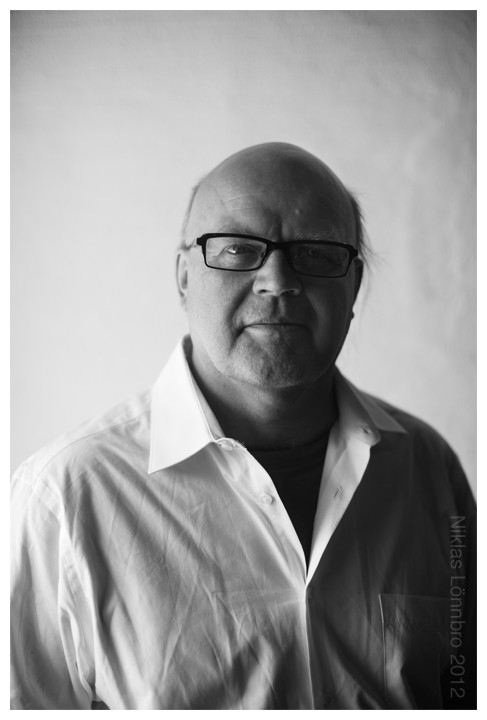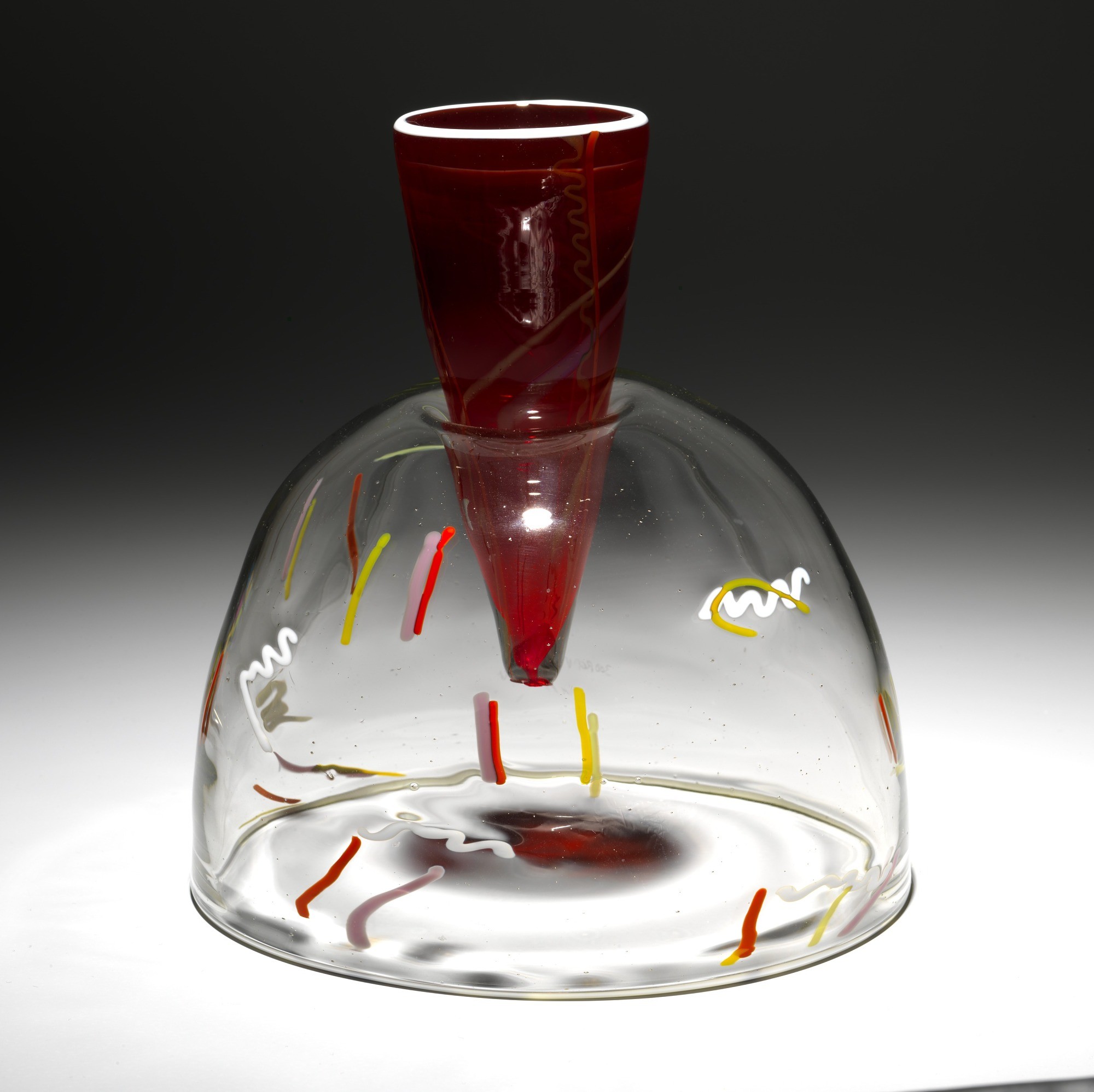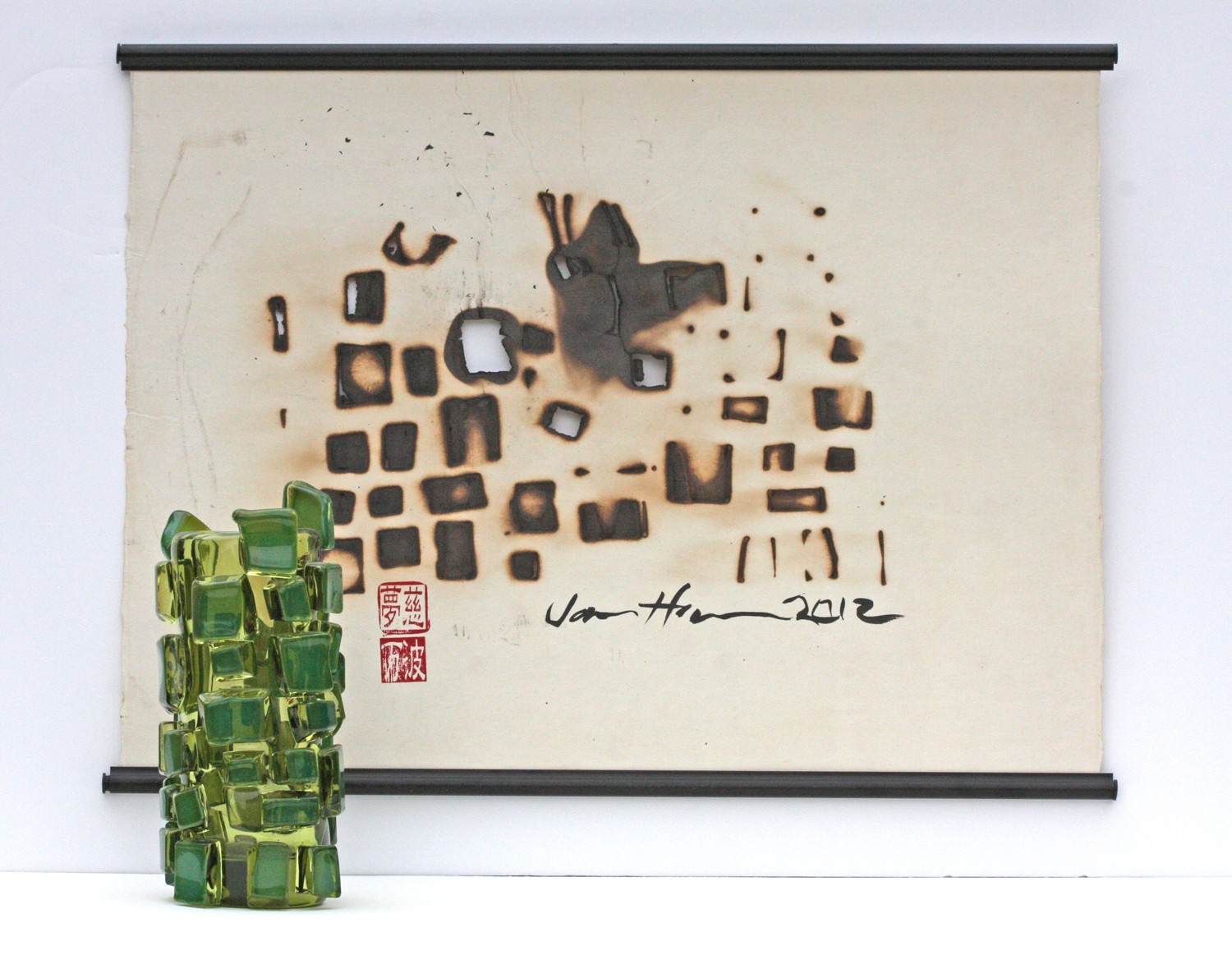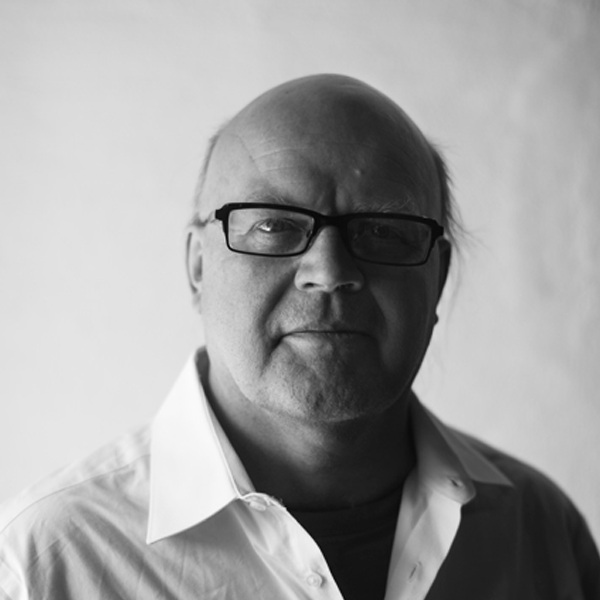
Image courtesy of James Harmon.
James Harmon
American artist and educator James Harmon (1952– ) earned his BFA in 1975 from the Rhode Island School of Design, where he studied glass with Dale Chihuly. He established himself as an independent artist and pursued graduate studies in glass at the University of Illinois from 1975 to 1979. In the mid-1980s, as a working artist at New York Experimental Glass Workshop (NYEGW; later UrbanGlass), Harmon was an active participant in the workshop’s initiatives and was instrumental in developing an educational partnership between NYEGW and New York University. In addition, Harmon was the director of the artist planning committee during the transfer of NYEGW from Manhattan to Brooklyn and the artist representative who worked with architect Jeffrey Beers on the new studio. Harmon moved to Pennsylvania in 1993 and since 2014 has been an assistant professor at Keystone College, where he directs the Regional 3-D Design Center.
Works

Untitled (Double Vessel), 1979. Glass. H: 7.75 in, W: 7 in. Collection of the Smithsonian American Art Museum, Gift of Elmerina and Paul Parkman (2000.106.1).

Green Vase, 1985. Image courtesy of James Harmon.

Niijima Green, 2012. Image courtesy of James Harmon.
